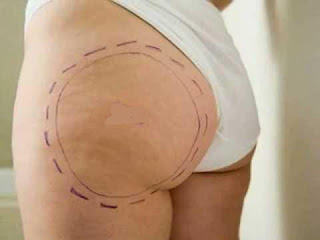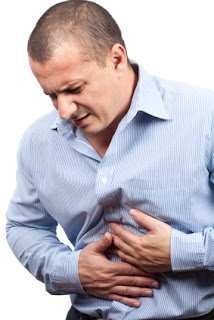We require iodine to remain healthy. Vegans do not eat eggs, fish or cheese which contain iodine, therefore we need to look for foods that do. Iodized salt contains iodine, but many of us have cut down on salt or we are using salt that is not iodized, we need to find other sources. Thankfully that is quite easy as most seaweed (sea vegetables) contain enough iodine to satisfy our iodine requirements easily.
Internally iodine is mainly stored in the thyroid where it is necessary for the formation of the thyroid hormones. These hormones control the body's temperature, cell production, nerve and muscle function, metabolism, protein synthesis and the health of hair, teeth and skin. Low intake can cause many problems including lethargy, depression, tingling or numbness in hands and feet, weight gain, hair loss, dry skin and in more extreme cases a goitre (enlarged thyroid gland).
Many may remember having iodine tincture, dabbed on our cuts and abrasions, when we were children. It is still one of the finest items for our first aid boxes being an excellent antibiotic as it kills 90% of bacteria, fungi, viruses, yeasts and molds on the skin. Internally, if our body has sufficient iodine it will help to fight many infections.
There are hundreds of seaweeds but the majority of us are only able to get the dried version from health shops or the better supermarkets. Some of the most common seaweeds are Kelp, kombu, wakame, arame, nori and dulse. Seaweed is also high in calcium, iron, vitamin A, niacin, protein and fiber.
Kombu is a wide , thick dark green seaweed with a strong flavour and is sold fresh, frozen, in powdered form, pickled and as dried strips. It is popular as the main ingredient in a Japanese soup stock called Dashi and can be cooked in grain and vegetable dishes. It is a natural tenderizer for beans and makes them more digestible. It has an excellent iodine content.
Wakame is a long thin seaweed and turns bright green after soaking and it has a sweeter flavour than kombu. Fresh it is eaten in salads and vegetable dishes and dried it is used in miso soup. Note that dried wakame expands to seven times its original size when soaked and that it has contains fucoxanthin, that is said to reduce fat storage and help burn fatty tissue.
Arame is a large brown seaweed that becomes thin and black when dried. It is sweet and mild and perfect for those who are not used to seaweed. It is used in salads, soups and grain dishes.
Nori is thin sheets of red dried seaweed, heated over a flame it turns dark green. It is used to wrap around sushi, as a condiment.
Dulse is a red seaweed with a tangy flavour. It is used in soups and baked dishes. Also used as a condiment and snack.
Kelp, also known as bladderwack is sold in powdered form and can be used as a salt substitute or natural tenderizer for beans which makes them more digestible.
If you find you do not like eating seeweed or even using it as a condiment, it is also available in capsule/tablet form from your local health shop. Note that some foods stop proper absorption of iodine and those are soy, flax seeds, and raw cruciferous vegetables (broccoli, Brussels sprouts, cauliflower, and cabbage). Therefore eat them at separate times to a seaweed dish or taking the capsules/tablets.
Store dried seaweed in airtight containers in a cool, dark place. They have a long shelf life. When soaking add some sea salt to the water. Use the soaking water in cooking as it contains many nutrients from the seaweed.
***************************
Vegan Dashi (basic Japanese soup stock)
The Japanese usually make dashi with kombu and shaved dried bonito fish, or small dried fish, this Zen Buddhist style soup is satisfying enough and Vegan. Keeping dashi in the refrigerator or freezer, to use anytime you want.
5 cups water
5 pieces kombu 1"/2cms long each and cut in thirds crosswise
5 dried shiitake mushrooms, cleaned and rinsed
Clean kombu with a slightly damp cloth. Place water in a saucepan. Soak the kombu and shiitake mushrooms in the water until tender (+/-3hrs). Heat the water over high heat and reduce heat once it boils. Remove kombu just below boiling point. After around five minutes, remove saucepan from the heat. The boiling time depends on the size of shiitake mushrooms and the soaking time. Remove the shiitake mushrooms from the water, and save them for use in other recipes. Notes: You can make dried shiitake mushrooms by drying raw shiitake mushrooms in the sun for a couple of days.
Norimaki Sushi Rolls
Many people think 'sushi' means raw fish, but it actually means vinegared rice.
150g/5oz sushi rice, rinsed thoroughly and drained
225ml/8fl oz water
25g/1oz sugar
50ml/2fl oz rice wine vinegar
4 sheets dried nori (roasted and rolled seaweed)
wasabi paste
cucumber, peeled, de-seeded and cut into batons
red pepper, de-seeded and cut into batons
salt
soy sauce and pickled red ginger, to serve
For the dipping sauce
100ml/3fl oz rice vinegar
75g/3oz sugar
1 small red chilli, finely chopped
Put the rice in a pan with the water and bring to the boil. Cover and simmer for five minutes, then take off the heat, leave covered and allow to cool.When the rice is cool, put it in a bowl, season and add the sugar and vinegar. Mix well.Lay out the nori sheets and spread a little wasabi on each. Put a line,about 2.5cm/1in wide, of rice a little way in from the bottom edge. Press some cucumber and pepper into the rice. Top with more rice and roll the nori sheets up tightly. Chill for 30 minutes, then cut into 4cm/1in long pieces. Cut off and discard the uneven ends. Make a dipping sauce by heating the vinegar, sugar and chilli until the sugar dissolves.Serve the sushi rolls with the dipping sauce, extra wasabi paste, soy sauce and pickled red ginger. Serves 6

 The following information is of vital importance.
The following information is of vital importance.

 Listen to this interesting 13 minute NPR audio on
Listen to this interesting 13 minute NPR audio on 







